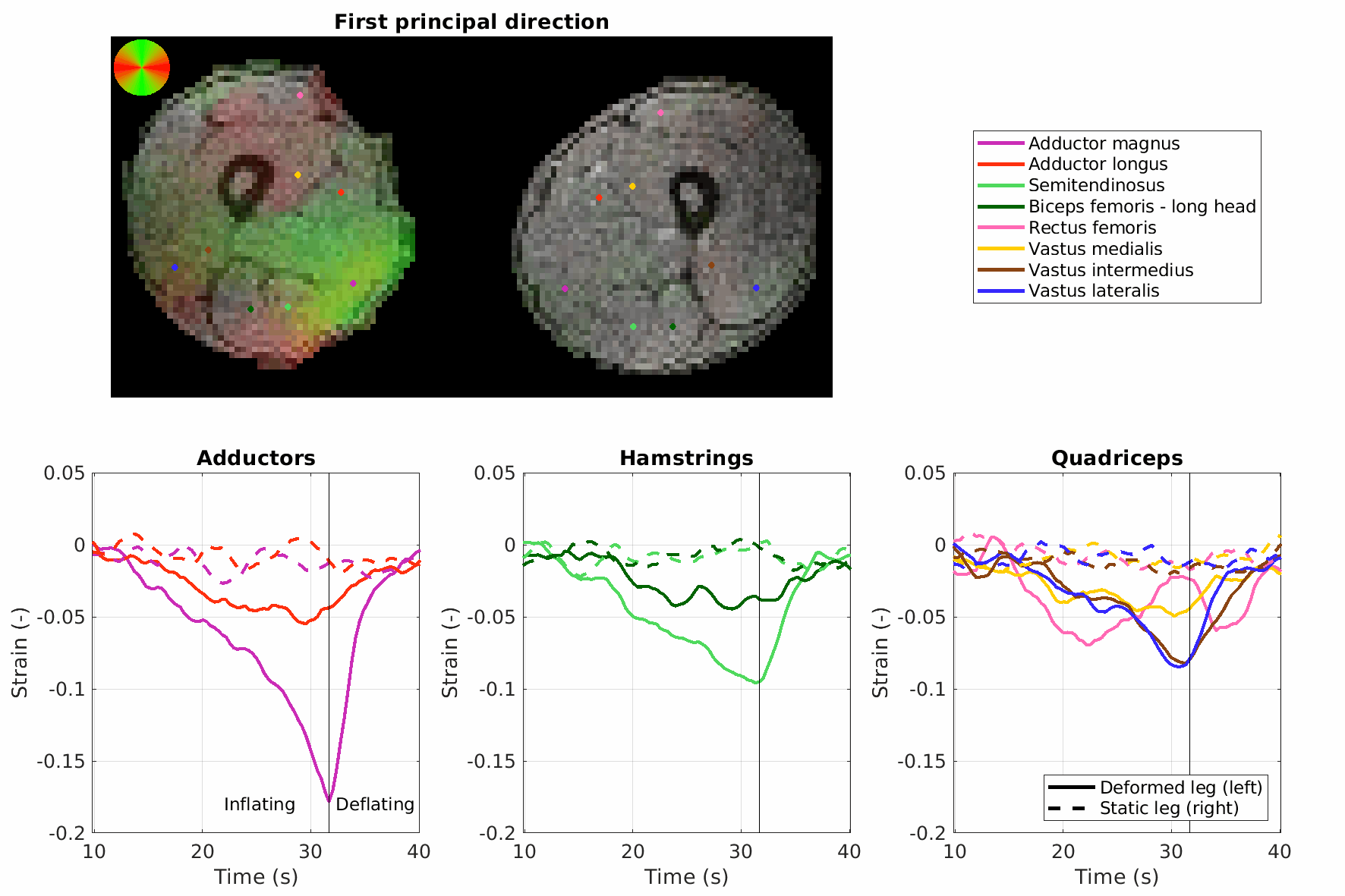
Description
Dynamical information can be a valuable source of information for cardiovascular or musculoskeletal studies. However, measuring dynamics at a high spatial and temporal resolution with conventional MRI techniques is extremely challenging. Spectro-dynamic MRI aims to infer dynamical properties directly from k-space data. It achieves this by jointly reconstructing the time-resolved images, the displacements, and the mechanical parameters, all directly from the measured k-space data.
In our latest work, we have applied Spectro-Dynamic MRI to estimate time-resolved dynamics in the human thigh. Next to the motion fields, the mechanical properties of the muscle tissue could be inferred from the measured data.

Figure 1: Top: The direction (hue, red = LR, green = AP) and magnitude (transparency) of the first principal strain overlayed on top of the estimated image series. Bottom: The first principal strain value for a few spatial locations (see colored dots) over time for both legs (solid lines for the deformed left leg, dashed lines for the static right leg). This value is negative, indicating a compression caused by the applied pressure. Furthermore, the spatial distribution of the principal strain direction is related to the underlying anatomy of the different muscles.
Related publications
- Max H. C. van Riel, Niek R. F. Huttinga, and Alessandro Sbrizzi. Spectro-Dynamic MRI: Characterizing Mechanical Systems on a Millisecond Scale. IEEE Access, 2022. doi:10.1109/ACCESS.2021.3138631.
- Max H. C. van Riel, Tristan van Leeuwen, Cornelis A. T. van den Berg Berg, and Alessandro Sbrizzi. Time-Resolved Reconstruction of Motion, Force, and Stiffness Using Spectro-Dynamic MRI. IEEE Transactions on Computational Imaging, 2023. doi:10.1109/TCI.2023.3324757.
- Heesterbeek, D. G., van Riel, M. H., van Leeuwen, T., van den Berg, C. A., & Sbrizzi, A. (2024). Data-driven discovery of mechanical models directly from MRI spectral data. IEEE Transactions on Computational Imaging.
Grants
NWO-VIDI grant 18897 2021-2026 (P.I.: Alessandro Sbrizzi)






